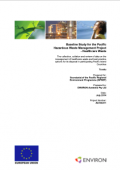
This report presents findings and offers recommendations of an assessment conducted for Tuvalu on the management of healthcare waste and best practice options for its disposal.
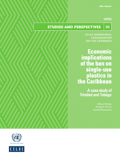
The study presents an economic analysis of the possible impacts of policy to limit the use of single-use plastics in selected economies of the Caribbean. The study focuses on the economy of Trinidad and Tobago as case analysis and examines the role of single-use plastics in production and distribution in selected value chains and estimates related cost margins in order to assess the potential for substitution of alternatives to single-use plastics.

The review analyses the e-waste situation in 14 Pacific Island nations. It starts with a brief history of efforts to deal with the problem of e-waste and presents recommendations for each country.

This paper provides an understanding of how COVID-19 has impacted sustainable transport modes and examples of how governments are using this moment to leverage the increase in different forms of sustainable mobility.

The Paris Agreement calls on countries to reduce emissions and strive towards achieving an equitable 1.5°C planet. This paper discusses the opportunity for a green recovery of the transport sector in the context of its impact on emissions worldwide.
Three cities are featured to exhibit the potential, impact and challenges...

This paper presents new low-carbon initiatives that can make the landscape of post-COVID-19 freight deliveries sustainable. Several emerging examples include autonomous delivery robots in North America, crowd-shipping services in Asia, and e-cargo bikes in Latin America and the Caribbean.
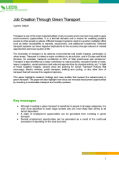
This paper highlights research findings and case studies that support the advancement in green transport, and how cities can increase employment opportunities by investing in sustainable transport and mobility systems. Case studies include examples from public transport and the cycling industry in India and the United States.

This paper looks at ways cities can rethink urban mobility systems post-pandemic, putting people at the centre of transport and street planning.
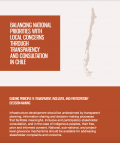
Chile has established large national parks and other protected areas and has increasingly incorporated different dimensions of sustainability into public policy. The country is home to nine indigenous groups: Aymara, Atacameño, Quechua, Diaguita, Kolla, Rapa Nui, Mapuche, Kawéskar and Yagán, and the regions they inhabit often lie hundreds of kilometres...
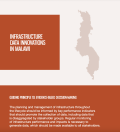
This case study illustrates Guiding Principle 10: Evidence-Based Decision-Making and is part of a series of ten case studies which aim to inform the forthcoming wave of global infrastructure investment. Collectively, they specify and demonstrate how environmental, social and economic sustainability must be integrated right across infrastructure policymaking at the systems-level. The individual principles and case studies were developed via ongoing global consultation and inputs from experts and UN Member States, as part of implementation of the UN Environment Assembly (UNEA) Resolution 4/5 on Sustainable Infrastructure.
